GRAND COUNTY, Colo. — As a pair of best friends descended down Berthoud Pass toward Winter Park for a day of skiing, they spotted something that made their hearts race: a cloud of snow high on the ridge.
On the calm Thursday morning, Sam Staley, in town on spring break from teaching at Florida State University, knew the puff of snow wasn't the wind. His friend, Don Gallo, who was driving, hit the brakes.
It was an avalanche.
"Whoa, whoa, whoa!" they both exclaimed.
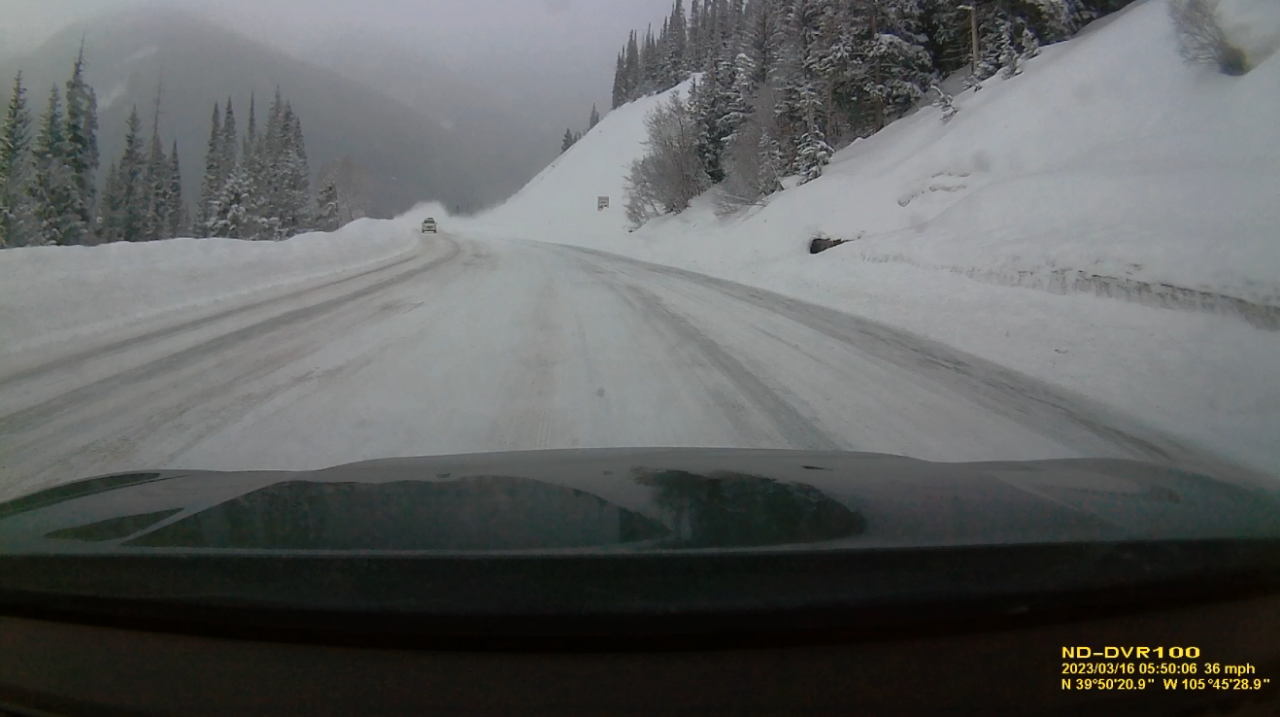
Gallo, who lives in Golden and is a guide with Winter Park's SkiMeisters club, had a dash camera that captured the avalanche, which ended up covering both lanes of US 40 on the last downhill stretch before the sharp left turn toward Winter Park.
"We were going pretty slowly as we were in that last stretch," Gallo said. "And I think Sam noticed something first."
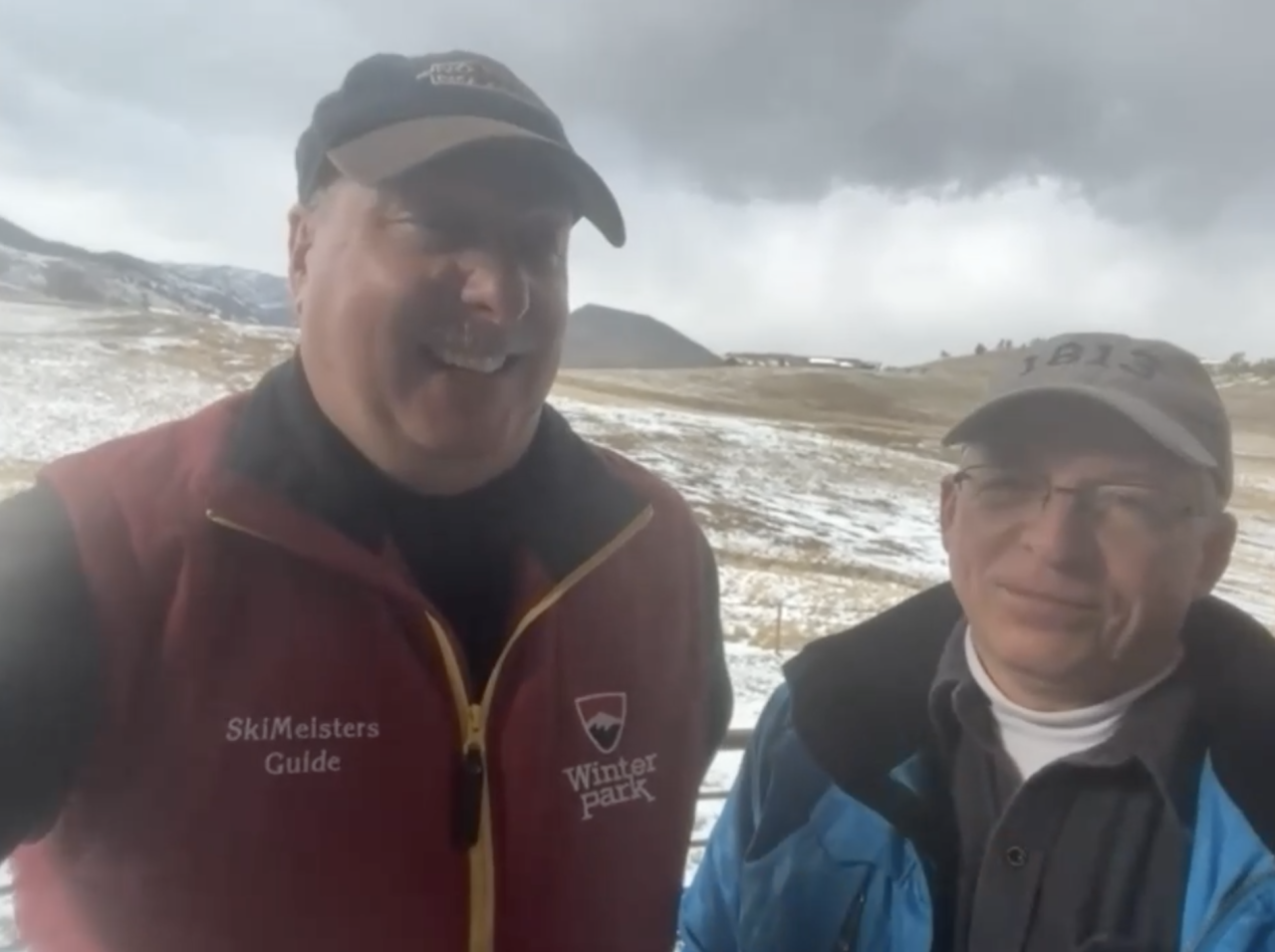
Staley, who volunteered with the National Ski Patrol, said he noticed a "puff of white" near the trees on the slope. Within a second, Gallo slowed the car and turned on his car's hazard lights. They stopped about 100 feet away from it, he estimated, and neither of them saw any cars get hit.
"Since we were in a car, if we had been closer to the avalanche, if we'd actually been in its path, we would have been submerged," Staley said. "Probably not taken over the road itself, but certainly moved from the right lane, moved into the left lane... I think we were really, really lucky. Because this could have been a lot worse, very easily."
One car going in the opposite direction had passed that exact spot just seconds before the slide tumbled downhill.
"I don't even know if they realized what they avoided," Gallo said.
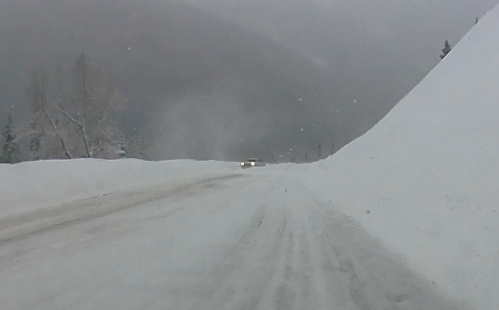
Staley said at its deepest point on the right side of the road, snow piled about eight to 10 feet tall. He estimated that if the pass had had bumper-to-bumper traffic, the avalanche would have caught at least eight cars.
As Gallo slowed down to a stop, a few pickup truck drivers passed them, not seeing the road was blocked until they got around Gallo's car. They then also rolled to a stop on the icy road.
At that point, several travelers, including Gallo and Staley, got out of their cars to help shovel snow off the road so traffic could reopen. Staley said his recollections from avalanche training came rushing back to him as he ensured nobody was hurt and the slope was safe to work under.
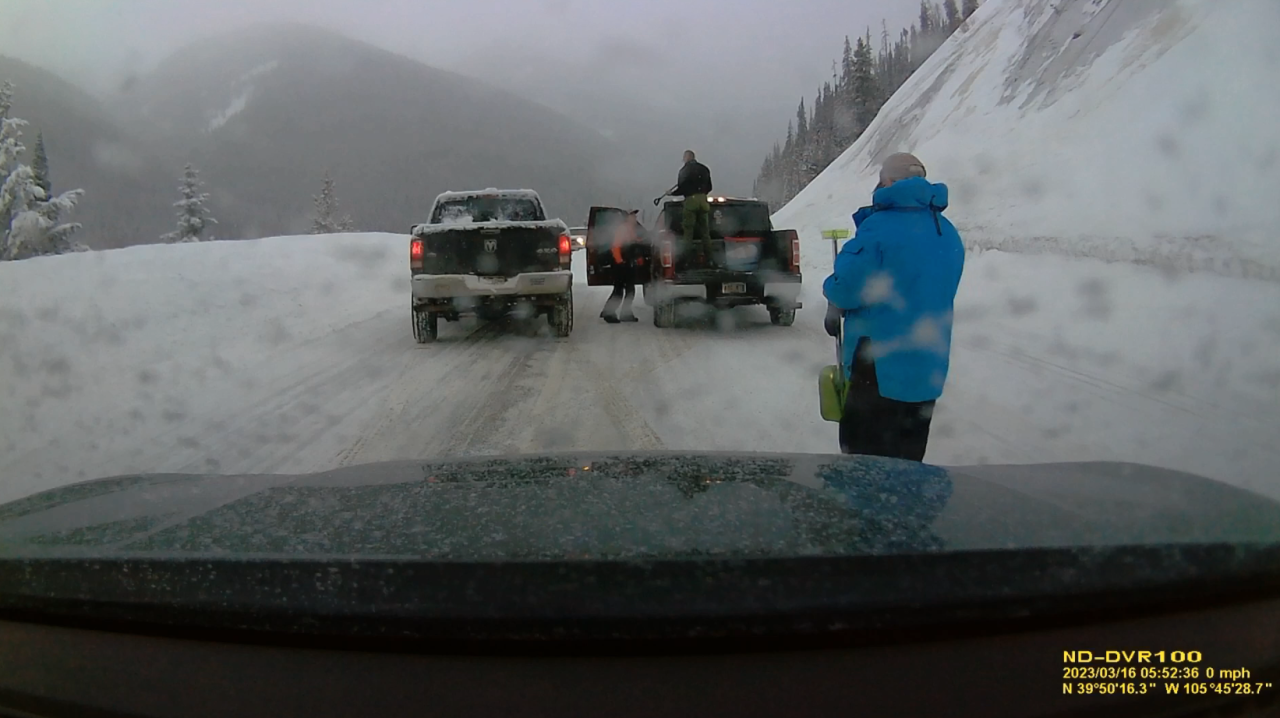
"It definitely triggered some old memories that I had not thought about in a long time," he said. "And definitely got the heart moving."
Luckily, a snowplow came by the area about five minutes later and began to move the snow off the road.
"A great shout out to the Colorado Department of Transportation because they've got it dialed in," Staley said. "They know how to move things through. And it was really kind of interesting to watch that part, especially as an out-of-stater — looking at how the Department of Transportation actually operates."
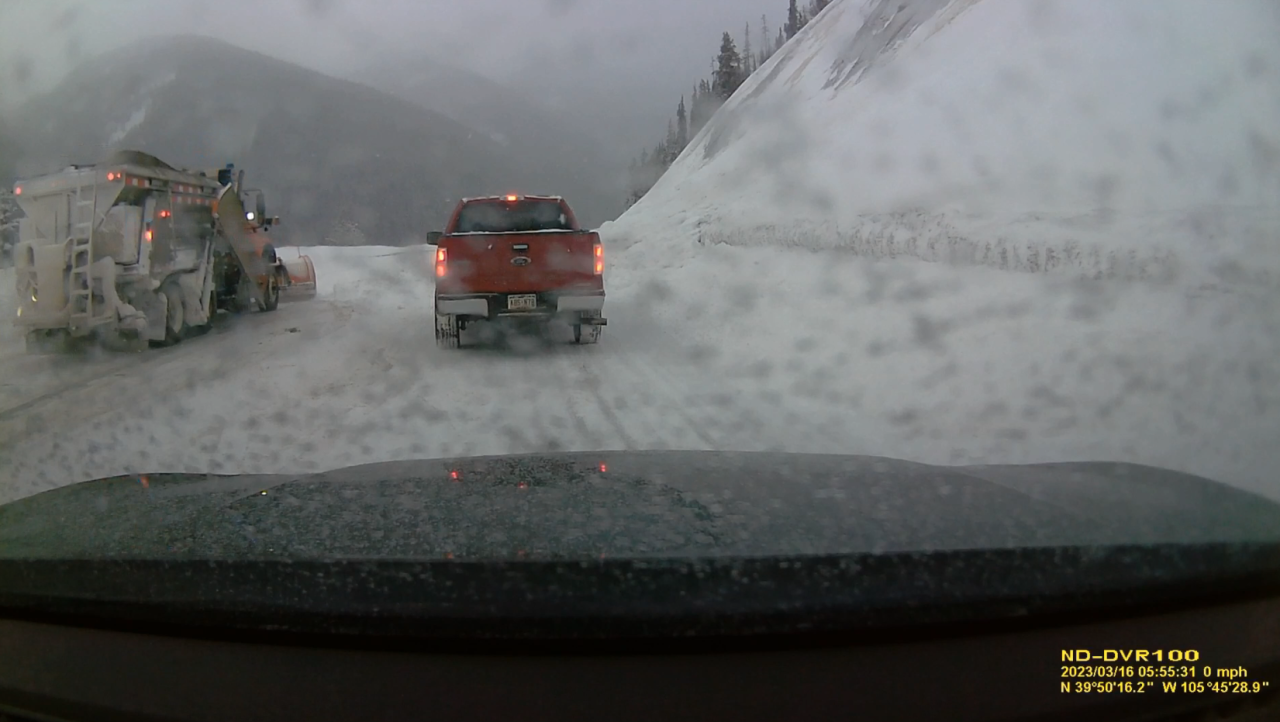
He acknowledged all of CDOT's mitigation efforts in the winter time, noting that even on well-traveled roads like Berthoud Pass, avalanches can still happen.
Gallo said after 19 years living in Colorado, this marked the first time he had to use his emergency supplies — mostly his shovel — that he kept in the back of his car.
"The mountains are wild, you know. Like Sam said, even though it's a road that people travel all the time, and it seems very well-maintained, avalanches are a fact of life here in Colorado," Gallo said. "Be prepared, have an emergency kit in your car, have sleeping bags, have some food, have some water, have cell phone chargers, have some warm socks and gloves, and a shovel and a tow cable too, because it might be you getting caught in that avalanche."
"This is winter in Colorado," he continued. "It happens."
Click here to check the Colorado Avalanche Information Center's avalanche forecast.






